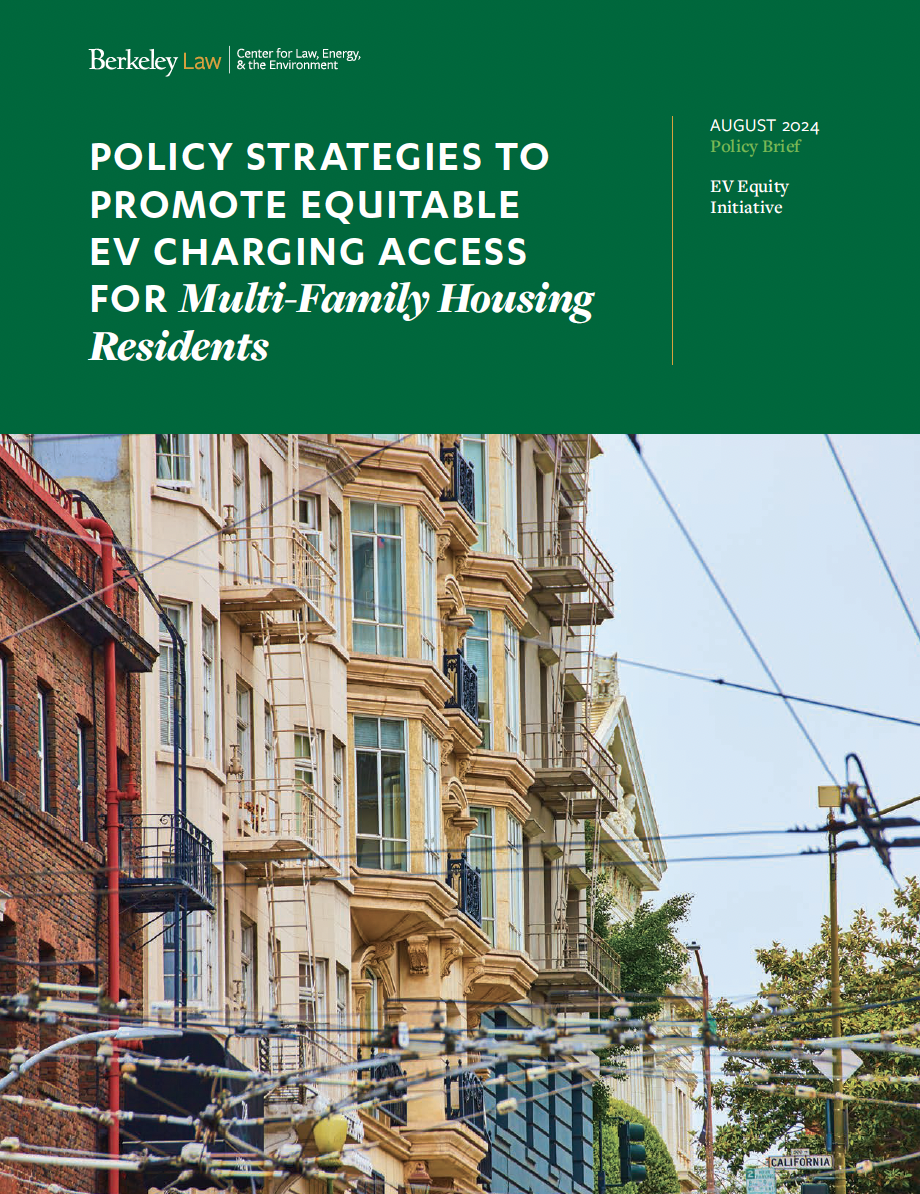August 2024 
The rapidly approaching electric vehicle (EV) transition that California and a dozen other states have committed to enact over the coming decade mounts pressure on state and local governments to deliver millions of new EV chargers across various location types. Homes constitute the core of a convenient and reliable charging network, and EV charging infrastructure in multifamily housing and multi-unit dwellings (MFH and MUDs) in particular will serve a vital role in ensuring an equitable clean mobility transition.
The ability to fuel vehicles at home represents one of the clean mobility transition’s most significant, practical enhancements to passenger vehicle driving and mobility. Various cost and convenience benefits of at-home charging leads EV drivers to characterize their residence as the most important location for their charging needs. However, heightened barriers to EV charger installations in multifamily housing have largely restricted the recent growth in residential charging access to single family households. Three key charging barriers for MUD residents include:
- High installation and operational costs required for EV charging in MUD parking areas (and in public spaces for MUDs that lack onsite parking)
- Low EV demand and awareness among MUD residents and building managers
- Limited electrical and network capacity, particularly in older MUD buildings
The current lack of electric vehicle charging at MUDs limits the ability of their residents – particularly in lower-income and dense urban communities – to access the health and financial benefits of this clean technology. Our report, informed by interviews with program officials and multifamily residential charging experts, draws insights from city programs and existing case studies to identify equity-oriented solutions to the three MUD charging barriers highlighted above. Some key findings include:
- Grants, rebates, and other incentive programs require equity-focused allocation methods.
- MUD-specific electricity rates can address inequities in charging prices.
- EV ownership incentives and accommodations for MUDs with low near-term charging demand can improve charger accessibility and help jumpstart EV adoption.
- Targeted stakeholder outreach is crucial for equitable participation in incentive programs.
- Load-balancing charging equipment can help minimize electrical upgrades but also reduces user convenience.
- Community ownership and investment models should accompany EV charging installations to address displacement concerns.
This brief is intended to guide local government leaders, building managers, and other stakeholders involved in the planning and installation of charging infrastructure at and near multifamily residences.
Access the full report here: Policy Strategies to Promote Equitable EV Charging Access for Multifamily Housing Residents
Contact Malcolm Johnson or Ted Lamm for more information.